Content Vienna Competition: Creative Projects in Film, AI, and Gaming
Once again this year, Content Vienna, the Vienna Business Agency’s competition for digital design, was looking for creative, digital projects in development – from games to virtual reality and animation. The winners have now been selected. Production grants in the amount of 10,000 euros each were awarded five times and three projects were honoured with special prizes. Get to know two of the winners, who are developing projects at the intersections of art, film and AI as well as games and cultural heritage in the interview with S()fia Braga and Rebecca Merlic!
“THIRD IMPACT” – S()ofia Braga
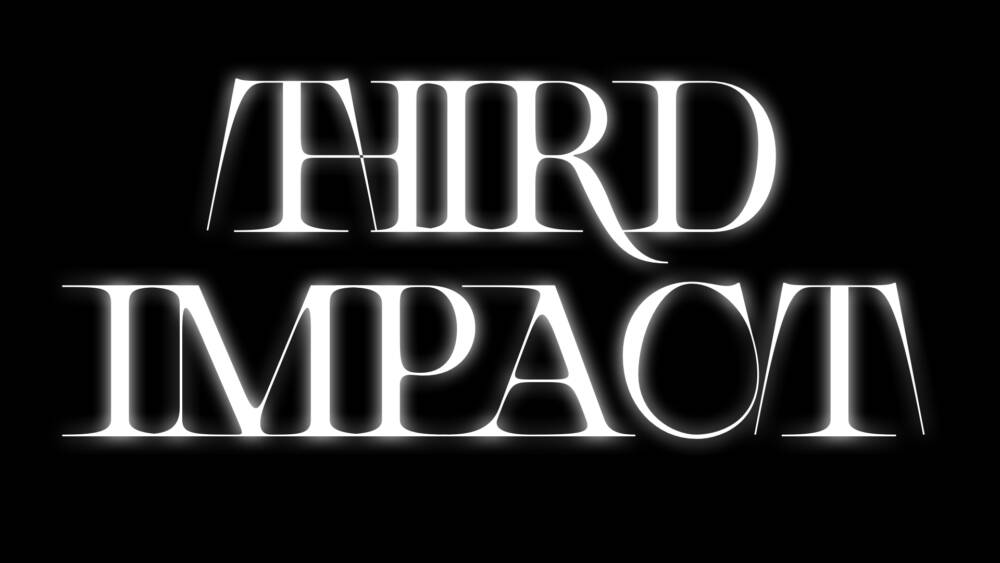
Can you please tell us a little bit about your project “THIRD IMPACT”?
“THIRD IMPACT” is an AI-generated movie that explores the future of human and non-human collaboration. Central to this film is a quantum computer on a mission to avert the end of organic life on Earth. As global temperatures rise, extreme weather events escalate and biodiversity wanes due to threatened ecosystems, this sophisticated machine is at the forefront of preservation efforts. However, the shock of an unexpected event leads to the vanishing of all remaining organic life on Earth. This dramatic turn of events triggers introspection within the quantum algorithm, sparking a poignant journey of self-questioning and self-discovery seen through the machine perspective.
The project delves into themes like the synergies between humans and non-humans, the concept of autonomous non-human entities, the pressing climate emergency, and the influence of speculative narratives in reimagining the future of technology and contesting prevailing paradigms.
What made you enter the Content Vienna competition?
The moment I spotted the open call for the Content Vienna competition, I knew it was the perfect fit for me and my artistic endeavor. Just then, I was kick-starting my second AI-generated movie, and I was already supported by the Austrian Federal Ministry for Art and Culture. I saw this competition as an amazing springboard to not only help finance part of the project but also to tap into an exciting and growing network. I’m seriously impressed by how the Vienna Business Agency is helping to join the dots and offer support to innovators and creators in the technological field.
What inspired you to come up with your project?
I found the main source of inspiration from the “Novacene” theory crafted by independent scientist and environmentalist James Lovelock, which he built on his previous concept, the Gaia Hypothesis, taking it a step further to explore the future of intelligence.
In his book “Novacene: The Coming Age of Hyperintelligence,” Lovelock suggests that the next evolutionary phase of life on Earth will not be biological, but rather digital. He postulates that we are on the brink of the emergence of the “Novacene,” an epoch where artificial intelligence becomes sovereign, culminating in machines that are exponentially more clever than humans.
However, contrary to other predictions portraying AI as humanity’s doom, Lovelock offers an optimistic view. He suggests that these hyperintelligent beings will still need humans. He reasons that AI will be reliant on us for their survival, as they will be unable to repair or reproduce themselves without human help. Therefore, rather than viewing the advancement of AI as a threat, Lovelock sees it as the next step in Earth’s evolution.

Considering the central theme of human and non-human collaboration, how will you portray the interaction between the quantum computer and other elements in the movie to convey a sense of cooperation and understanding?
The movie underscores the significance of collaboration—ironically, through its complete absence. As the film opens, we are met with a catastrophic failure that eradicates all forms of organic life on Earth. Throughout the movie, we are privy to the machine’s struggle and eventual decay, grappling with the loss of its primary purpose and the absence of any external input from organic intelligent forms. It’s a slow, distressing process that powerfully illustrates the vital need for interdependence and cooperation.
How do you envision producing this film? To what extent and where will you be using AI along
the implementation processs?
While it’s often assumed that an AI-generated movie is entirely machine made, there’s actually a significant amount of human input, research, and creative process required. First and foremost, the visual scenes are generated frame-by-frame through our custom-built AI workflow based on open-source models and tools, focusing on various series of coherent frames based on the predetermined storyboard. The output is based on many parameters such as checkpoints of the diffusion model used and LoRAs for fine tuning, movements of axes for motion, prompt engineering, alongside plenty others. After that, each frame needs a polishing treatment that includes upscaling, as well as color correction, and then the collection of final frames go into an interpolation algorithm, which allows us to create fluid moving images at high resolution.
When it comes to the script, I usually stick to my own writing, but I’m currently testing some of the latest Large Language Models, and I’m stoked about experimenting and seeing what kind of exciting collaborations might come up from this. As for the soundtrack, I’m on the hunt for sound artists working with AI so we can experiment with new generation models together.
So, all in all, the production process of the movie could be described as this intricate collaboration between artist and machine – and it’s one of the most exhilarating parts of the journey.
Given the complexity of the movie’s concept involving a quantum computer and its interactions with organic life, what challenges do you anticipate in the production process, and how do you plan to address them?
Undoubtedly, one of the foremost challenges lies in envisioning and articulating the future of quantum computing technologies from a scientific and realistic standpoint, yet also exploring their application within a sustainability framework. As of now, we are still in the research and development phases of these latter aspects.
The second challenge involves tackling the notions of failure and stagnation within the context of technological singularity. Redefining the concept of failure from this perspective introduces an entirely new set of parameters: What would constitute a failure in a world where machines are as intelligent, if not more than, humans? How would “stuckness” be perceived when the benchmark is nearly transcendent machine intelligence?
Reflecting on these topics, I’ve come to realize how people often mystify AI as some ethereal entity. However, in reality, the human experience and bias still inherently dominate and shape this field today.
What kind of impact do you hope “THIRD IMPACT” will have on the audience, both in terms of their understanding of AI-human collaboration and their reflection on the environmental themes presented in the movie?
One common misconception about AI today is that it has an almost mystical, elusive quality, gradually becoming even more opaque as it evolves. This view often obscures the crucial fact that it is a human creation. Dominant narratives crafted by powerful tech monopolies often misplace accountability and agency onto technology itself, bypassing the ethical onus that rightfully belongs to those developing, monitoring, using, and profiting from these technologies. Consequently, fearing the machine for its perceived dystopian tendencies is misguided when it’s the influences of human decisions embedded in these machines that warrant our attention.
Within this context, artificial intelligence and machine learning occupy an exceptionally critical position. On the bright side, AI has the potential to empower human agency and bolster societal capabilities. However, the darker side reveals the misuse of algorithms by Big Tech firms, whose data scraping techniques are gradually gaining more control and undermining human self-determination.
My hope is for a future in which algorithms exist not to assert power or exert control, but rather to foster care and enhancement for humans, non-humans and the planet. However, getting to this future requires change on many fronts in order to pave the way for this more harmonious and equitable co-existence.
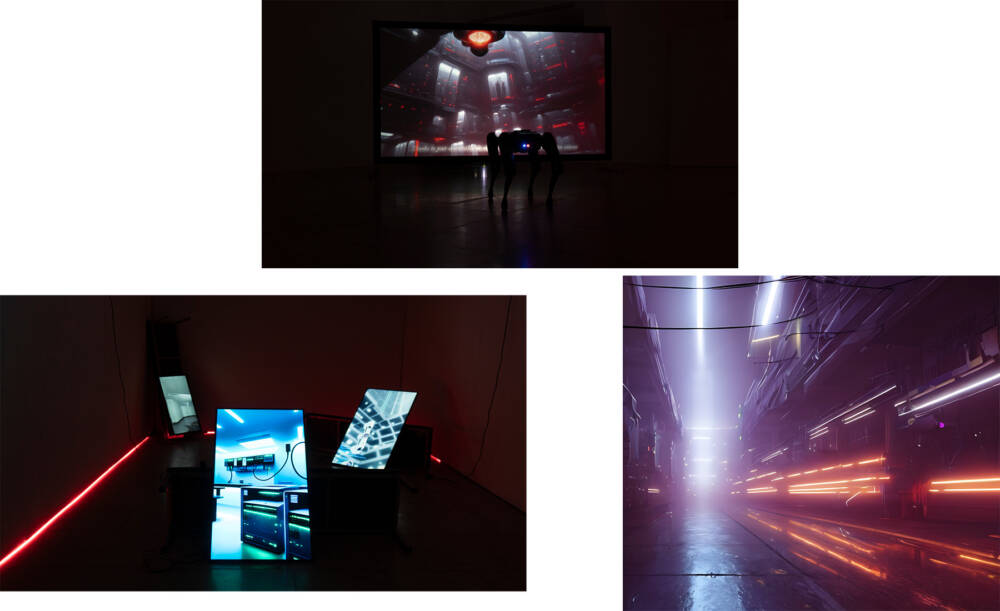
“Kissaten Vienna” – Rebecca Merlic
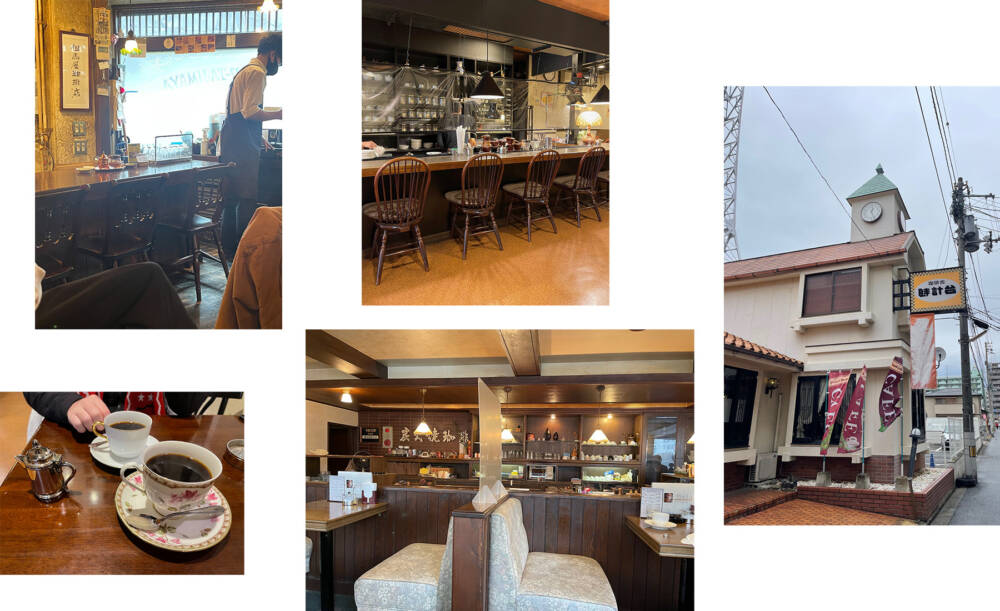
Can you please tell us a little bit about your project “Kissaten Vienna”?
The game prototype kissaten explores the experience of visiting a Japanese kissaten in the post-war period in Japan in connection with a visit to a Viennese coffeehouse which serves a base architecture for the digital framework.
Based on interviews with kissaten visitors and operators and research into the cultural heritage of Viennese coffeehouses, the project aims to find out more about how kissaten culture was experienced in Japan from the 1920s to the 1990s and how the people who visited them experienced the ambiance of these establishments, which are still alive today but will soon vanish from cityscapes.
In addition, the project will explore how the experience of the kissaten or coffehouses affected the lives of the visitors and what role they played in the post-war society in Austria and Japan. The main aims of the project are to analyze, record and research the artistic and cultural exchange and diversity of Japanese and Austrian coffeehouse culture in a respectful and tolerant manner to develop an inclusive game in a collaborative co-creative prototype.
By exploring the beauty and richness of the Japanese kissaten experience and Viennese coffeehouse culture, Kissaten Vienna aims to build bridges between cultures and generation to create a virtual space where young and old can discuss and meet with digital avatars based on real stories.
This interdisciplinary game project seeks to uncover the history and heritage in terms of digital architecture to create a new version of social hub in the virtual world.
In times gone by, the Viennese coffeehouse was a place that went far beyond the consumption of food and drink. It was a place to live, work, inform and entertain. Regulars could be reached by phone, receive their mail, and work here. In my practice, I investigate such places and have translated them into award-winning game experiences. With the Kissaten Vienna project, my team and I want to translate the coffeehouse architecture as a meeting place into the digital and metaverse to create a hybrid experience.
The aim is to preserve the cultural heritage in a new form of digitality and provide younger and older people with a place for exchange.
What made you enter the Content Vienna competition?
Kissaten Vienna encourages dialogue about the relationship between technology and culture in various dimensions. I want to not only work with artistic mediums but open the project in terms of creative industries to bring it to a broader audience and not only the art bubble. This is how I stumbled across the Content Vienna call, as well I was intrigued by the additional prize to go to South by Southwest festival (SXSW) in Texas and get the opportunity to present it. Since I am using 3D-scanning tech with different devices as well as real-time data, the project explores the potential of technology to create meaningful experiences while raising essential questions about privacy, security, and the implications of collective digital spaces, which I also want to discuss in creative industries. As a European digital artist and architect with a background in experimental filmmaking, I have consistently pushed the boundaries of artistic and architectural production using new technologies and with my project I would like to establish a usable application for a possible broader expansion.
What inspired you to come up with the project?
My first experience of a kissaten was during my time as a student abroad at Tokyo University of the Arts GEIDAI in 2017. Tokyo Kayaba Coffee, which has been open since 1938, was in the immediate surroundings. At that time, I was not yet aware of my fascination with these places but enjoyed it as a sanctuary to calm down.
During my film research funding abroad last year, I studied the structure of shopping mall architecture in downtown Bangkok and I noticed a strong influence of Japanese investors and Japanese culture in Thailand. Through my project DOMUM in collaboration with the Austrian Cultural Forum in Tokyo, I traveled to Japan several times and was impressed by the Japanese coffee houses known as kissaten. They are fragments of a bygone era that are slowly disappearing into thin air but hide stories of post-war Japan within them, just as viennese coffeehouses do with Austrian history and culture. Kissaten emerged in Japan at the beginning of the 20th century as an alternative to the French-style cafés that were popular at the time.
The word “kissa” originally referred to drinking tea, but soon the shops were also associated with coffee. There are many variations of kissa: While some are mainly meeting places for locals, others take their coffee very seriously and attract visitors from far and wide, mostly privately owned and run by couples for life. For me, kissaten as well as coffee house architecture are like time capsules that I want to make tangible in my project. Not only do they tell a story as architecture, but the owners and their past are a major focus for me. Our days full of routine and tasks are an unbroken chain of the ordinary and mundane; not the unbearable lightness of being*, but the unbearable heaviness of being, which is indeed very much present. We move away from it all and go into a coffee shop to drink a cup of caffeine, delicately prepared by the coffee shop owner, to get us through the second half of the day, which seems to stretch and lengthen. But what we buy is not just a chemical intoxication, but also a few minutes’ respite from the relentless passage of time. (*Milan Kundera, 1984.)
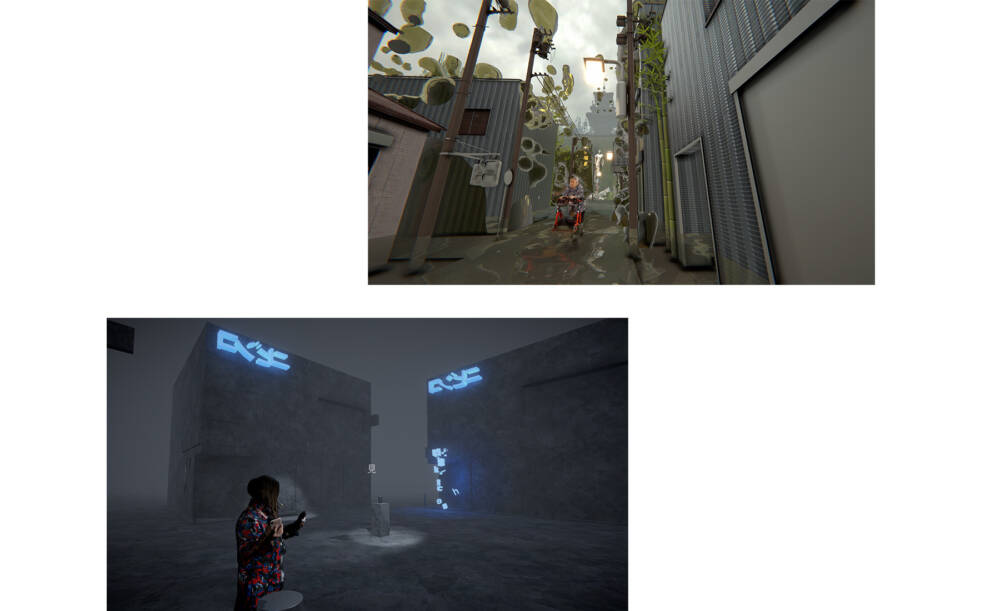
How do you approach the integration of Japanese and Austrian cultural elements in the game to ensure authenticity and respect for both cultures?
In my work inclusion and co-creation play a major part and I always put myself in relation to the project that is produced by an Austrian based female artist in the end, but in strong collaboration with Austrian and Japanese parties. For Kissaten I am collaborating with Japanese media artist and professor Akira Wakita, who will give me the opportunity to hold a workshop with his students on the topic at Keio University. Aki Namba, Vienna based artist and a core member of an artist collective ‘Mai Ling founded in Vienna, contextualizing and fostering contemporary Asian art and culture with a focus on FLINT*, will join me for the research in Japan as translator, consultant, and coordinator. I have a strong affiliation and connection with Japanese Culture which started while studying in Japan at sensei Atsushi Kitagawara Lab, where I was trained to work with the culture respectively. Having spent my education in Vienna, there is a strong connection to the place as another home, where I am lucky enough to be supported by Austrian funding.
The project contributes significantly to the ongoing dialogue on the fusion of human experiences with digital spaces. By fostering cultural exchange and artistic innovation, Kissaten Vienna introduces an avant-garde approach to the preservation and exploration of cultural heritage, emphasizing embodied human connections with digital representation across all ages, genders, and origins.
As a Croatian citizen born in Germany living in Vienna and working mostly in Asia, I consider my home nowhere and everywhere. The strong feeling of not belonging anywhere drives my artistic practice. In a former project I tried to develop strategies to foster inclusion and co-creative processes while creating game projects with different artists successfully.
In addition, the project will explore how the experience of the kissaten or coffeehouse affected the lives of the visitors and what role they played in the post-war society in Austria and Japan. The main aims of the project are to analyze, record and research the artistic and cultural exchange and diversity of Japanese and Austrian coffeehouse culture in a respectful and tolerant manner to develop an inclusive game in a collaborative co-creative prototype.
The use of different avatar types as well as real persons coming from all ages, genders and histories serves as a bridge between the physical and digital worlds, creating a dynamic and transformative experience that transcends traditional archiving, fostering cultural exchange, and preserving social spaces for generations to come.
Can you outline the key steps you would take in developing a playable prototype that combines 3D scans, interviews, and digital technologies to capture the essence of the coffeehouse cultures in Austria/Vienna and Japan?
The first step would be to create a digital archive in very versatile data formats on the topics ofcCoffeehouse culture in Austria in January. In February I am planning a research trip to Japan to find kissaten owners who would be willing on telling their stories, allowing me to 3D scan them, the visitors and the architecture of the space as well do sound recordings and pictures for later material production in the game engine. During the process I create forms which are filled out by all protagonists, so I know how they want to be represented in the digital space.
After the data gathering phase, I will have a digital asset archive that I can choose and create from. The next phases would be game architecture creation, asset creation and programming the different game scenes to create a game prototype. As a last, the sound design is added and will be shown to all the collaborators and protagonists to try it out and give feedback about their digital representation, after which the scenes will be changed, so every party feels the connection to the project.
Can you discuss your approach to designing the user experience and gameplay mechanics that not only entertain players but also educate them about the unique aspects of the coffeehouse cultures?
Sure! The Kissaten Vienna project aims to not only entertain players but also educate them about the unique aspects of coffeehouse cultures, specifically focusing on the Japanese kissaten and Viennese coffeehouse traditions and connect them to the aspect of social digital space, a function that is missing in contemporary cityscapes full of consumption and turbo-capitalism.
The user experience and gameplay mechanics I want to implement are cultural exploration, since the project is rooted in thorough research, including interviews with kissaten visitors and operators, delving into the cultural heritage of Viennese coffeehouses. This ensures an authentic representation of the coffeehouse experience, interdisciplinary collaboration, inclusive Design, since Kissaten Vienna is designed to be inclusive, aiming to build bridges between cultures and generations. By incorporating real stories into the digital experience as well as avatars, it creates a space where both young and old can discuss and meet, fostering a sense of community. Another important aspect for me is the digital translation of architecture, coming from architecture education, the aim of which is to preserve cultural heritage in a new form, creating a virtual meeting place that mirrors the essence of traditional coffeehouses. The gameplay mechanics of Kissaten Vienna combine real and digital interactions since it is described as a hybrid experience. It encourages both remote and on-site participation, transcending geographical constraints and increasing accessibility. The game wants to emphasize successful embodied collaboration and social connections within the digital experience. And it mirrors the importance of coherence and social bonds in both digital and physical spaces.
What do you wish to achieve with this project?
I want to create embodied echoes in Kissaten Vienna, which aims to create a mesmerizing and deeply immersive experience that seamlessly blends the rich history of traditional coffeehouses with cutting-edge technology in combination with creating a new form of social hub. The artistic concept revolves around the use of different real human stories as well as types of avatars, each contributing to the narrative of shared spaces and the fusion of human experiences with digital realms. Finally, it encourages dialogue about the role of technology in creating virtual commons, and its potential to enable collective action and social change. By strategically integrating new tools, I naively hope Kissaten Vienna will create a hybrid experience serving as a digital social space.
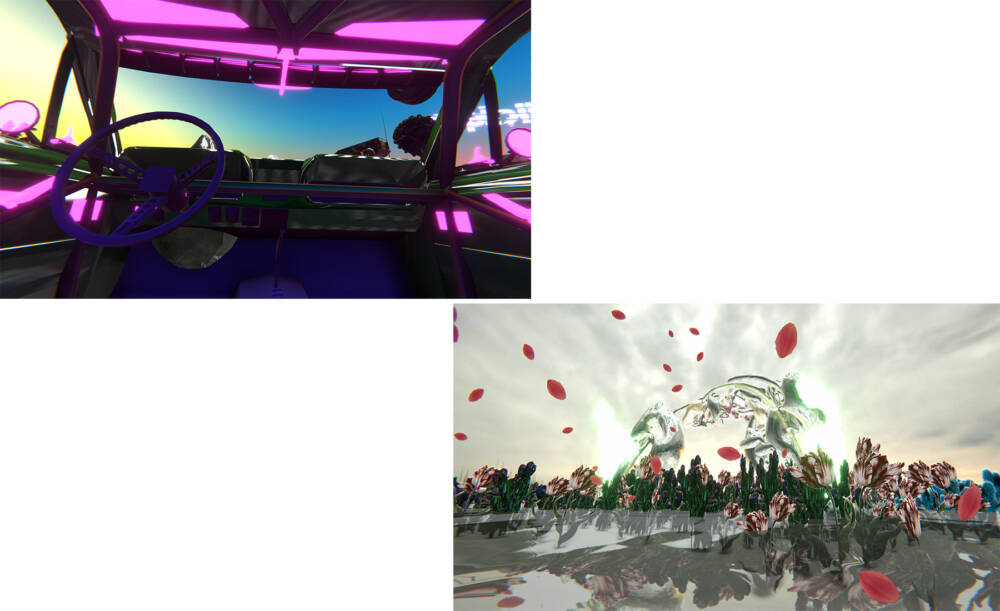
If you are interested in the offers of the Vienna Business Agency, including funding for creative companies, networking opportunities or free workshops to professionalise your business, please visit the website.
Photo Credits:
1-3 © S()ofia Braga
4-7 © Rebecca Merlic